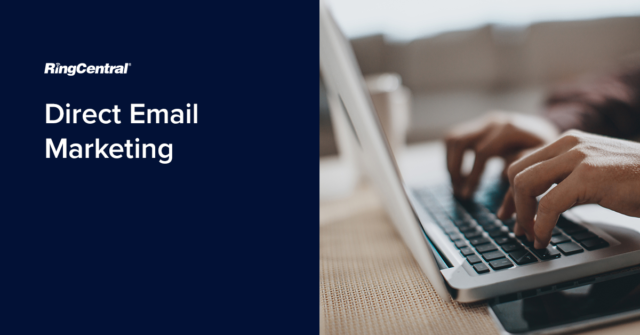These days, email has become both a gift and a curse. On the one hand, email provides us with fast, easy communication and marketing opportunities. But on the other hand (as many of us know) an inbox full to bursting with spam is nothing but a 21st-century nuisance.
But it’s not time to give up on email just yet. Done right, direct email marketing can still be seriously lucrative for your e-commerce business.
Not only does it increase return on investment (ROI), but 80% of business professionals also say that email marketing improves customer retention in their business.
What’s more a whopping nine out of ten marketers still use email to distribute organic content.
Email remains an integral marketing tool. It’s cost-effective, immediate, and reaches large audiences.
The key to successful email marketing, therefore, lies in the strategy. Not all email campaigns are made equal. In this blog post, we’re going to get to grips with the do’s and don’ts of direct email marketing and help you build an awesome campaign fit for any 2021 inbox.
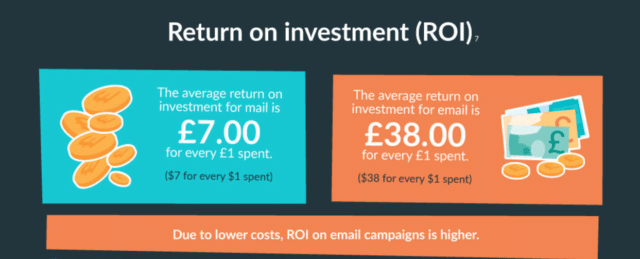
What is direct email marketing?
Direct email marketing is a product marketing strategy, and an important part of any digital marketing campaign. With direct email, business campaigns are sent directly to their intended prospects. The idea is to sell more of your products and/or services and improve customer relationships with personalised, intentional email content.
Typically, businesses will send standalone advertisements to a targeted list of recipients (those most likely to be interested in that particular product or service). But email marketing can be used for a variety of different purposes besides just selling new products. These include:
- Increasing traffic to your website landing page (via a direct email link)
- Increasing brand awareness with targeted educational content
- Identifying your best leads to improve your content for increased conversions
- Cart abandonment emails to close the deal with ‘close-to-purchase’ customers
- Upselling & cross-selling opportunities for increased sales revenue
So, in short, direct email marketing is just planned online marketing content sent via email to targeted clusters of customers. Usually, a campaign will have a specific quantifiable target in mind based on key performance indicators (or KPIs) – increased clicks, traffic, conversions, or purchases.
You might be thinking that this all sounds a bit too much like that which shalt not be named – aka spam. But there is a distinct difference between direct email marketing and the dreaded drivel that is unsolicited commercial emails (UCE). And that difference is consent.
Direct email campaigns are most often an opt-in service. For example, customers might opt-in to receive brand correspondence at the checkout when making a purchase. They become your subscribers.This also means that customers can opt-out (or unsubscribe) from this additional service at any time they please.
Furthermore, whilst spam generally takes an untargeted content marketing approach, direct email marketing is selective. The aim is to target bespoke content with the clients who are most likely to want to see it (and therefore most likely to click-through and convert into purchases).
In other words, direct email marketing is a mutual exchange between brand and consumer. And most importantly, it’s an essential part of any modern CRM solution.
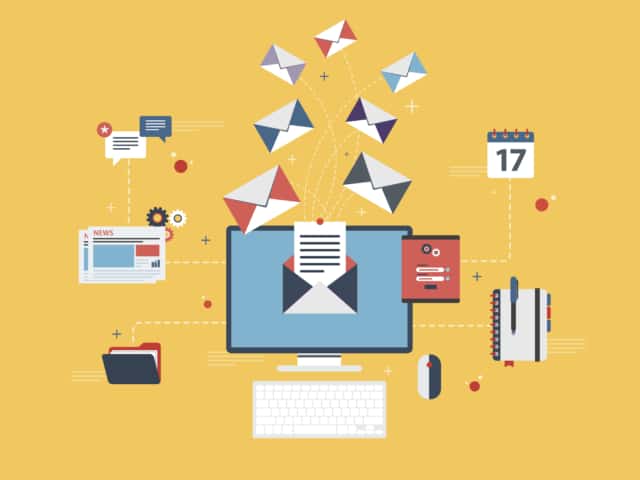
Does direct marketing still work?
Despite its credentials, some people are of the opinion that direct email marketing has had its day. That the modern consumer is just not interested in this kind of content any more. But the numbers tell a very different story.
- 49% of consumers would like to receive promotional emails from their favourite brands.
- 81% of SMEs rely on email as their main acquisition channel.
- Almost 60% of marketers claim email is their largest ROI
Direct marketing does still work. But it has to be done right.
When done right, email is a great marketing platform. It reaches large (highly targeted) audiences, is engaging and interactive, is memorable, and seriously personalisable. If your email marketing campaigns stand out against the crowd, they’re sure to generate consumer interest and increase your ROI.
In fact, when direct email marketing falls short of its potential, it’s more often than not the result of poor execution.
Take a look at these commonly reported advantages and disadvantages to see for yourself.
Advantages
- Segmentation helps establish relationships with prospects
- Opportunities for personalisation increase email open rates
- Marketing campaigns can be optimised with precision metrics
Disadvantages
- Risk of monetary loss due to poor segmentation
- Risk of monetary loss due to insufficient email lists
With this in mind, we can safely say that direct email marketing done right is totally worth your while. But how can we make sure our efforts aren’t in vain? How can we guarantee our marketing budgets are well spent and bring in those conversions at the end of the day?
That’s exactly what we’re going to talk about next.

Dos and don’ts of direct email marketing
When it comes to your email marketing strategy, there are some simple dos and don’ts. Abiding by these principles will take you far, and ensure that your campaigns are fit for purpose.
It’s time to let you into some secrets.
The dos
To improve your chances of launching a successful direct email campaign, make sure you’re following these simple steps for success.
1. Do use personalisation
Personalisation is so important when it comes to any type of marketing. Today’s customers expect to be treated as valued individuals. In fact, personalised emails benefit from a staggering 50% improved open rate on average. That means ditching generic greetings and addressing customers by name, with catchy text and vibrant graphics, too.
2. Do include CTAs
A call to action (or CTA) should be a mainstay of every single email. Even with great, engaging copy, your customers are unlikely to navigate their browser to find your product.
They expect a direct link to exactly what your email is advertising. And the best way to encourage clicks is with a catchy CTA. Depending on your desired outcome this could be a link to your social media presence, educational content, a subscription sign-up, or a specific purchase.
Did you know that 90% of readers who read your headline also read your CTA copy? Research shows that placing your CTA in the middle of your copy garners the best results.
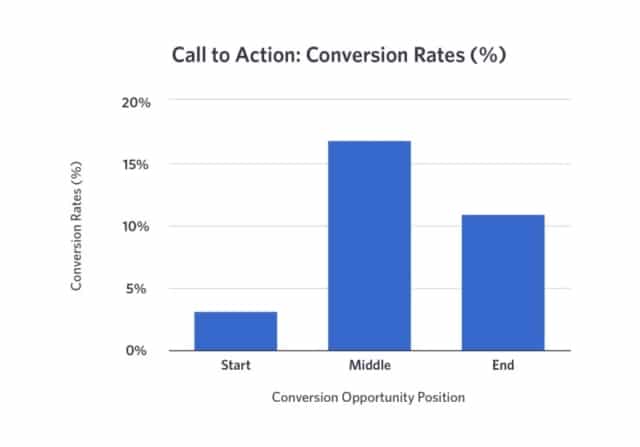
3. Consider using an email builder
If you don’t have technical or graphic design experience, you can still create amazing email campaigns to send out to your clients. Consider using an email builder. There are many email service providers on the market today from HubSpot to MailChimp, that will help you automate and build great, personalised emails designated and easy-to-use email templates.
The don’ts
Many unsuccessful direct email campaigns are unsuccessful because they scrimp on (or simply forget about) the basics. So here are some of the most common things that marketers forget when launching a new campaign.
Before sending out your next email drive, cross-reference with this checklist.
1. Don’t neglect your subject line
Your subject line is so very important. It’s the key to any first click. Make sure your subject line is direct, engaging, and to the point. It should stand out in a crowded inbox and make your reader want to see the content that dwells within. Your subject line is another opportunity for personalisation. In fact, research suggests that emails with personalised subject lines receive 50% higher open rates than their counterparts.
2. Don’t forget to proofread
Our school teachers might have taught us to proofread our work, but that’s one lesson that we as adults sometimes choose to forget. But proofreading your content and email newsletters is so very important. Your emails are a direct reflection of your business. Typos and grammar mistakes speak of unprofessionalism and distract readers from engaging with your content fully.
Spelling mistakes and lazy design will also make your emails look like spam – and we all know what that means. It means zero engagement and immediate trash-canning (or worse- unsubscribing altogether).
3. Don’t forget to follow-through
Another common mistake is lack of follow-through. There’s no use sending out an emailing campaign and leaving it to the universe to do as it will. Successful marketers track, track, and track again with precision metrics and KPIs. That means analysing how your customers are responding to your emails and how to follow-up with them in a personal way, at a later date. Create a subscriber list of your most engaged customers and target them for future messaging.
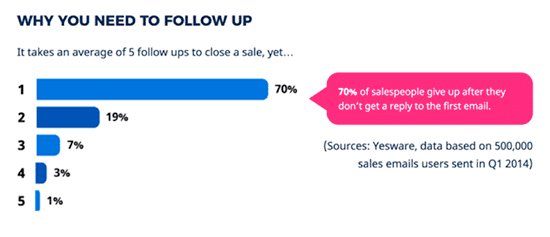
Direct email marketing strategies
When the time comes for you to develop your own email marketing campaign, the first step is always to develop a clear, intentional strategy.
Before sending out any content, you’ll need to be clear about who your target audience is, create an optimised mailing list, and time your content distribution for optimal results.
Furthermore, during and after the campaign, your strategy should allow for comprehensive testing of your outputs using key performance metrics. This will help you monetise on your successes and improve upon weak spots in any future email campaigns.
So let’s talk strategy.
In skeletal form, a direct email marketing campaign can be boiled down to three essential stages.
These are:
-
- Targeting your audience
- Creating mailing lists
- Testing your mailing
Let’s take a closer look.
Targeting your audience
Audience segmentation is essential for successful email marketing. What does that mean? It means stop talking to as broad an audience as possible, and start focussing on those that really matter. To create high-value content, it needs to be specific. It needs to speak to your target consumer. This said, your first step is to identify your unique target audience. Ask yourself:
Who is best suited to my product or service?
When are they most engaged online?
Where are they?
Honing in on a specific market group will reduce the amount of money spent blindly targeting the masses. In other words, you’ll spend less, and receive more in return. Your mailing list will mean absolutely nothing if the people listed in it aren’t the right fit for your products or service.
Once you’ve honed in on your desired audience, and their stage in the customer journey, then you can tailor your content to meet their desires, expectations, and interests. For new customers, focus on educational material and welcome offers. It doesn’t always have to be transactional. For long-time clients, think upselling.
Creating mailing lists
You’ve located your target. Now all you need is a killer mailing list. The quality of your mailing list is one of the single most important guarantors of a positive response. Depending on the purpose of your marketing campaign, you might want to create your own mailing list or get access to an external mailing list. There are advantages to both options.
Your own mailing list is great for increasing response rates (that’s because these people have ‘bought-in’ to your brand before). The best way to generate a foolproof mailing list is to gather leads wherever you can. Think email addresses and phone numbers for SMS marketing.
For example, customer lists, previous responses, or purchases are a great place to start.
Hold on to this data in a database. But make sure to clean it up from time to time and always encourage your recipients to update their details periodically.
An external mailing list has a completely different effect. These lists can be purchased, rented, or brought in by third-parties such as trade directories. The idea is to reach out to a new (or larger) market – potential customers who have had no direct contact with your brand in the past.
Oftentimes a combination of the two is best. But remember to cross-reference your own mailing list with any external lists that you are using for overlapping customers. Particularly if one of your existing recipients has opted out of receiving future mail from you already.
Testing and monitoring
One of the best things about email marketing is the ease of testing. Just think about how difficult it was to measure customer responses to door-to-door or letterbox-based direct mail campaigns.
To see how your email campaign is faring, it’s essential to test individual performance metrics along the way.
Before sending out your campaign, test it out on colleagues across various different devices. It’s important that your campaign offers full deliverability on desktop, tablet, and mobile. Did you know that 42.3% of people will delete a marketing email if it is not mobile-optimised?
You could also try:
-
- Split testing (A/B testing) – which content gets the best response?
- Test different offers and discounts – which promotions get the best response?
- Test out different timings – when can you send out emails for the best response?
- Test different headlines or subject lines – which encourage the most clicks?
- Check your GDPR and make sure your marketing data strategy is compliant.

Explore RingCentral customer service solutions
RingCentral offers fully comprehensive, and customisable, customer service solutions. If you’re looking to up your email marketing game then look no further. RingCentral Customer Engagement service solutions help users support, engage, and inspire their customers with omnichannel cloud contact centre software.
That means powerful automation and campaign tools, alongside intelligent reporting and analytics – all from one single, unified workspace. Click here to see how RingCentral can help improve your business customer service today.
Email is Going Strong
It’s clear to see. Email is still going strong. Customer engagement with targeted email campaigns is at an all-time high. But that doesn’t mean any old email will do. For better ROI, you’ll need a solid email strategy fuelled by personalised content, mailing list optimisation, and precision metrics from start to finish.
Originally published Jun 09, 2021
